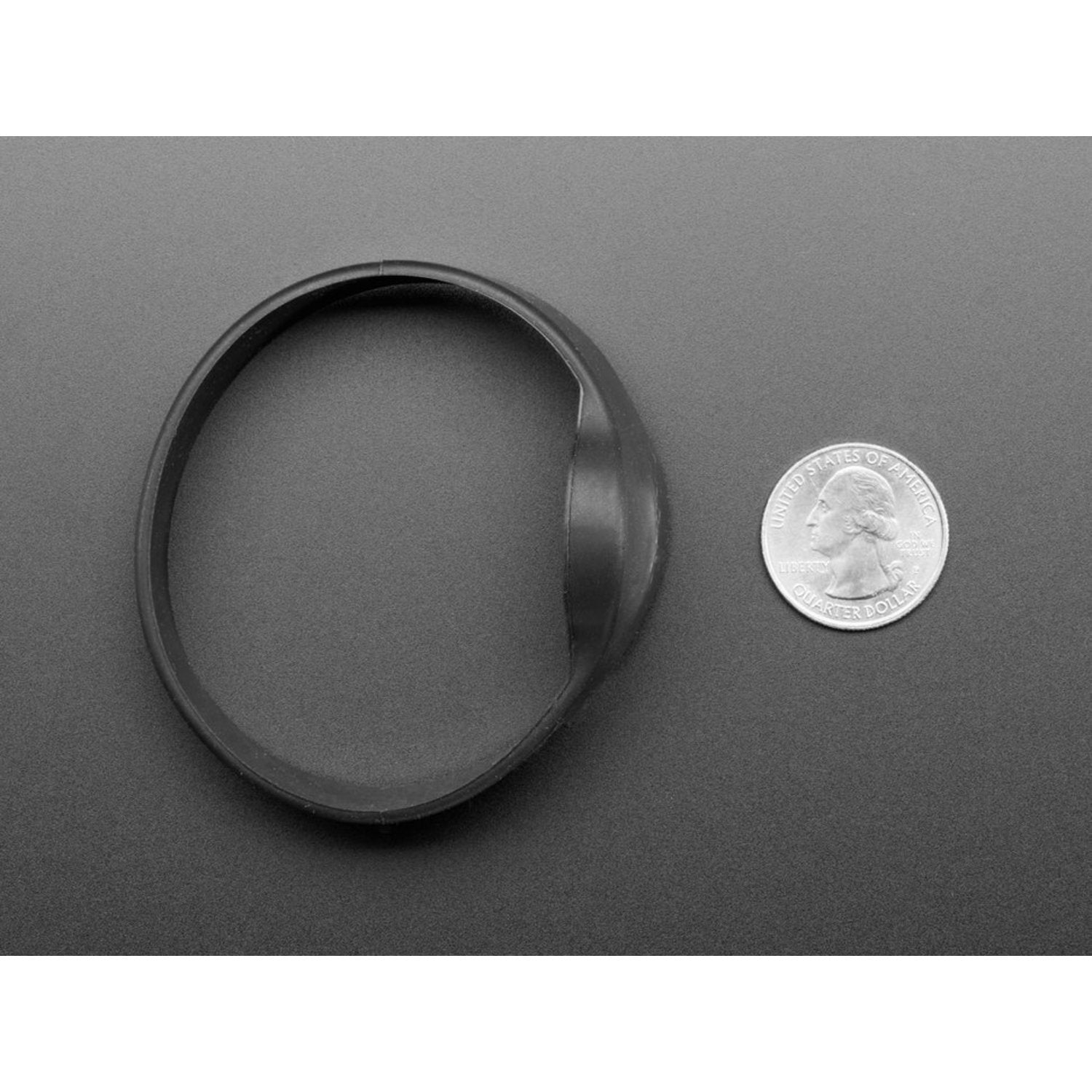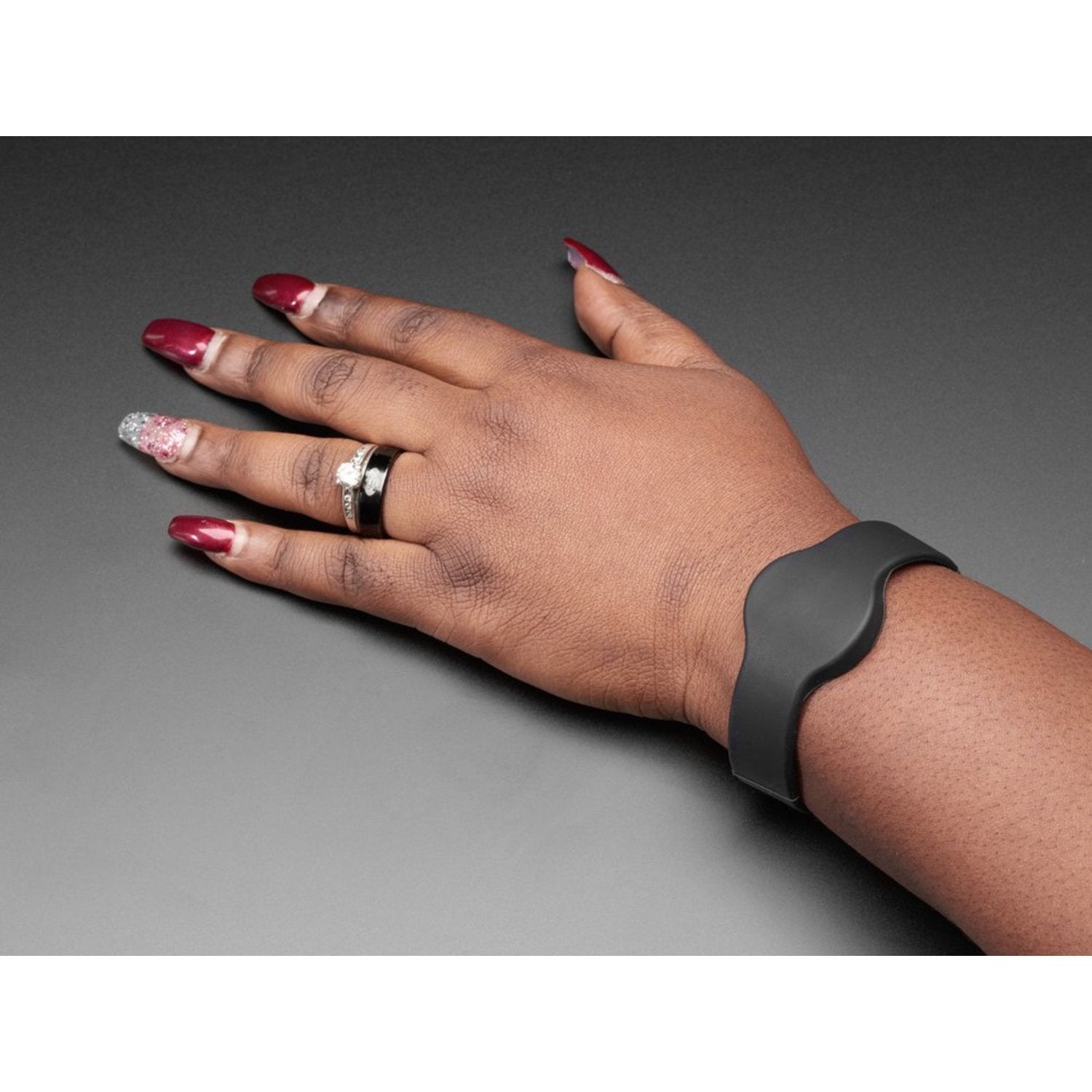This is a blank 13.56MHz RFID/NFC bracelet equipped with an NTAG203 chip. It's widely used for train or bus passes, information sharing, and contactless payment. You can also find it in other systems that need proximity cards. The bracelet has a small RFID chip and an antenna, and it gets power passively from the reader/writer when placed a few inches away. Almost any 13.56MHz RFID/NFC reader can read these bracelets. But remember, it should support ISO/IEC 14443 Type A cards, the standard NTAG uses, as there are other encoding standards like FeLica. The chips can store up to 144 bytes of data in writable EEPROM divided into 4 - byte banks and can handle over 10,000 re - writes. You can use our PN532 NFC/RFID breakout board or Adafruit NFC/RFID Shield for Arduino to read and write data to the EEPROM inside the tag. There's a permanent 7 - byte serial number ID in the chip for tag identification, and it can't be changed. These NTAG 'Type 2' tags work with any smartphone. They're more secure than 'Classic 1K' cards (MiFare S50s) and avoid Mifare's patent issues, so they're compatible with almost all RFID - supported phones without the need for an NXP chipset or license fee.


Using this bracelet is easy. First, make sure your reader or writer is a 13.56MHz RFID/NFC device and can handle ISO/IEC 14443 Type A cards. Place the bracelet a few inches away from the reader/writer, and it will get powered and be ready to read or write data. You can use our PN532 NFC/RFID breakout board or Adafruit NFC/RFID Shield for Arduino to interact with the EEPROM in the tag. Remember, the 7 - byte serial number ID on the chip can't be changed and can help you tell one tag from another. When it comes to maintenance, keep the bracelet away from strong magnetic fields and extreme temperatures as they may affect its performance. Also, avoid bending or crushing the bracelet as it has a small chip and antenna inside. With proper use and care, this bracelet can serve you well for a long time.